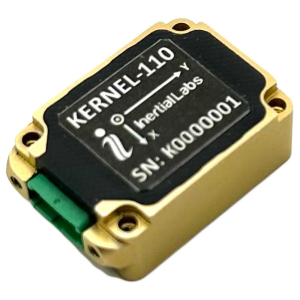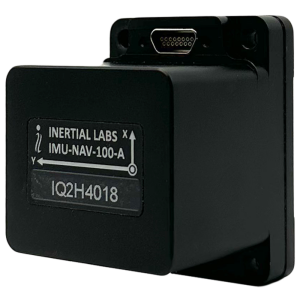
MEMS Technology: The Backbone of Modern-Day Sensors
A term that has been ever-evolving in the tech landscape is the term “MEMS: Micro-Electro-Mechanical Systems.” MEMS sensors have revolutionized various industries by enabling precise measurement of physical phenomena compactly and cost-effectively. This article explores the fundamental principles behind MEMS sensors, their mechanisms of operation, diverse applications across industries, and their integration into advanced technology systems within the Aerospace & Defense industry worldwide. Additionally, it discusses ongoing innovations in MEMS technology and their implications for future technological advancements.
MEMS sensors represent a fusion of electronics and mechanics on a microscale, facilitating precise measurements and driving innovations across industries. The components within these devices operate through transduction, converting physical parameters into electrical signals through the dynamic interaction of microscopic mechanical structures and electronic components. All Inertial Labs IMUs (Inertial Measurement Units) consist of robust MEMS-based accelerometers and gyroscopes.
Fundamental Design of MEMS Accelerometers and Gyroscopes
Fundamentally, all MEMS accelerometer sensors commonly measure the displacement of a mass with a position-measuring interface circuit. That measurement is then converted into a digital electrical signal through an analog-to-digital converter (ADC) for digital processing. The moving mass (suspended via a spring within a medium of air) is known to generate a change in electrical capacitance, which is digitized and then quantified as a known linear acceleration value. This sensing technique is known for its high accuracy, stability, low power dissipation, and simple structure to build. MEMS gyroscope sensors are similar in nature, with the only difference being that they measure both the displacement of the resonating mass and its frame because of the Coriolis acceleration, which allows them to sense angular displacement.
A series of fixed electrodes connected to the frame in parallel detects the change in capacitance generated by the moving mass. Once the signals are digitized, various signal processing steps, such as conditioning, demodulation, and low-pass filtering, are conducted before routing to a serial peripheral interface (SPI) or I2C serial protocol for the measurements to be provided to a host system.
Challenges Faced by MEMS Accelerometers and Gyroscopes
While precise engineering developments have led to significant advancements in the size, weight, and power reduction of MEMS sensors, natural challenges may, over time, affect the sensor’s accuracy performance.
Temperature Variations: MEMS sensors are sensitive to temperature changes, leading to variations in output characteristics such as bias, scale factor, and noise levels.
Aging Effects: Long-term usage can cause drifts in sensor parameters, affecting measurement accuracy over time.
Environmental Factors: Exposure to humidity, pressure variations, and mechanical shocks can impact sensor performance and reliability.
Calibration Techniques for MEMS Sensors
To account for the challenges stated above, manufacturing processes at Inertial Labs for MEMS-based IMUs go through a series of calibration and IMU procedures that result in high quality and continuous provision of sensor data streams over different environmental operating conditions:
Temperature Calibration: Employing temperature chambers or thermal control methods during calibration to assess sensor behavior across temperature ranges and compensate for temperature-induced errors.
Aging Compensation: Periodic recalibration, using algorithms to model sensor drift over time and applying correction factors to maintain accuracy.
Environmental Testing: Subjecting sensors to environmental chambers or simulated conditions to evaluate performance under varying humidity, pressure, and mechanical stresses.
Dynamic Calibration: Performing dynamic tests to assess sensor response under different acceleration or angular velocity inputs to verify linearity and dynamic range.
Advanced Calibration Methods
Sensor Fusion: Integrating data from multiple sensors (e.g., accelerometers, gyroscopes, magnetometers) and applying sensor fusion algorithms (e.g., Kalman filters) to improve accuracy, reduce errors, and enhance robustness.
Applications of MEMS Sensors:
Automotive: They play crucial roles in airbag deployment, stability control, and tire pressure monitoring for improved safety and performance.
Healthcare: MEMS pressure sensors contribute to the functionality of medical devices, wearables for health monitoring, and minimally invasive surgical procedures.
Environmental Monitoring: MEMS devices aid in weather forecasting, air quality assessment, and seismic activity detection, enhancing disaster preparedness.
Industrial Sector: MEMS sensors optimize machinery operations and offer real-time equipment condition insights, improving productivity.
Aerospace & Defense: They stabilize aircraft, manage navigation systems, and ensure precise airbag deployment during space missions, advancing aerospace technologies.
MEMS sensors continue to impact technology profoundly, offering compactness, intelligence, and interconnectedness to devices across industries. As we stand poised at the threshold of a technological revolution, one certainty stands tall – MEMS sensors will continue to pioneer how we perceive, engage, and navigate the world around us.
Inertial Labs is making significant advances in using MEMS sensors across various applications, emphasizing their innovation in this technology. One of their standout innovations includes the development of high-precision three-axis accelerometers, which are pivotal in enhancing performance and reliability in applications ranging from autonomous vehicles to marine and subsea systems. These accelerometers are designed to deliver critical data for navigation and control, ensuring high precision in challenging environments.
Moreover, Inertial Labs has been actively collaborating with major technology firms like Sony to integrate advanced LiDAR systems into drones, aiming to improve data accuracy and workflow efficiency in surveying, mapping, and cinematography. This collaboration highlights their commitment to leveraging MEMS technology in cutting-edge applications.
Do you have questions about this article?
Get in touch with Inertial Labs, Inc., and they would be happy to answer any questions you have about pricing, suitability, availability, specs, etc.













